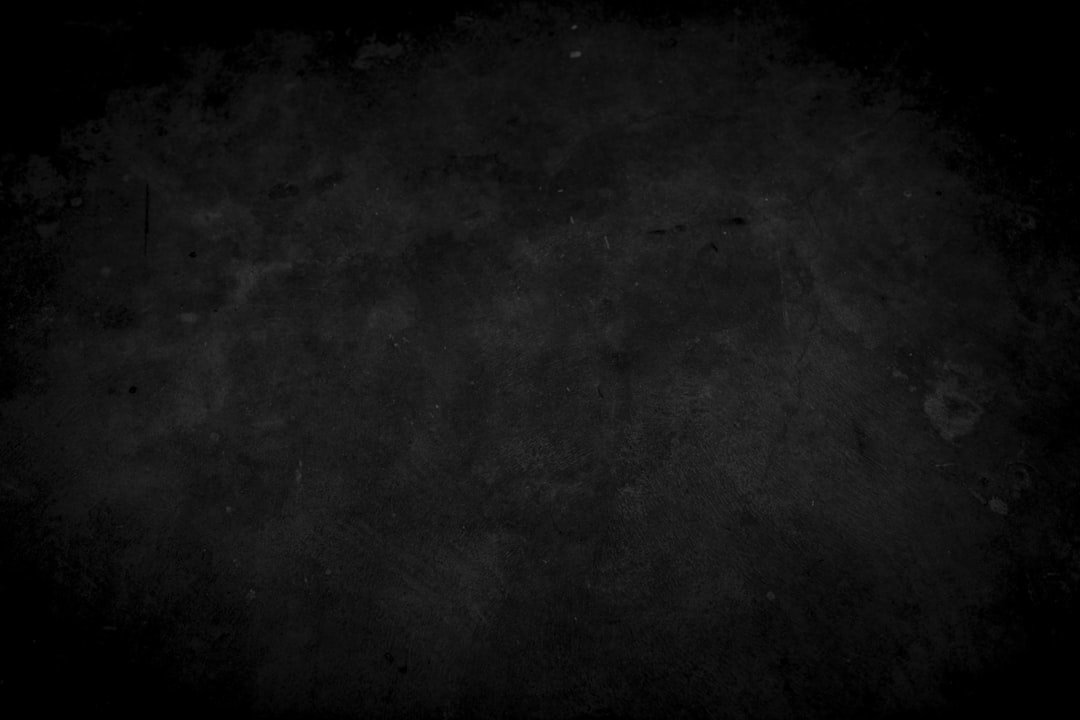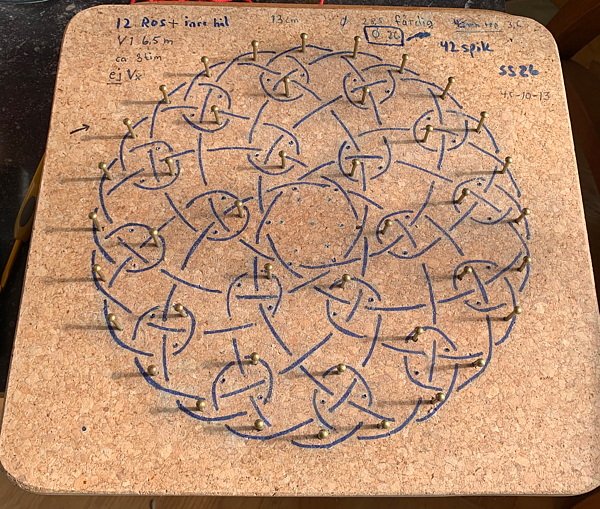
Tools for braiding and making rugs.
You don't need many tools to braid or make rugs. The tools are described in more detail below.
Braiding:
For simple bottles, a bag needle and a knife will do.For the more advanced, you will also need an awl and a Selma needle. You will also need a knife and preferably a small side cutter. Light-flowing instant glue or contact glue or textile glue is also good to have.
Rugs:
When making rugs, you will need a tow hook, large needles (upholsterer's needles) and a pattern board (a plate with nails). Here too, a knife, a small side cutter and contact glue or textile glue is also good to have.
Sack needles:
As a beginner when learning the principles, it is advisable to work with a sack needle. However, they do not fit as they look, so you have to modify them a little.
You can make this yourself or buy from me (in my courses you can borrow all the materials you need).
I have enlarged the eye to accommodate different thicknesses of rope, straightened the bend a little and thinned the tip. The original is on the right in the picture.
They come in 4 sizes, with the second largest (13.5) being the most used.
Needle 15: up to 4mm rope (6/1) (not shown in picture)
Needle 13.5: up to 3mm rope (6/2)
Needle 10: up to 2mm rope (6/3)
Npl 7.5: up to 1.5mm rope
They come in 4 sizes, with the second largest (13.5) being the most used.
Needle 15: up to 4mm rope (6/1) (not shown in picture)
Needle 13.5: up to 3mm rope (6/2)
Needle 10: up to 2mm rope (6/3)
Npl 7.5: up to 1.5mm rope
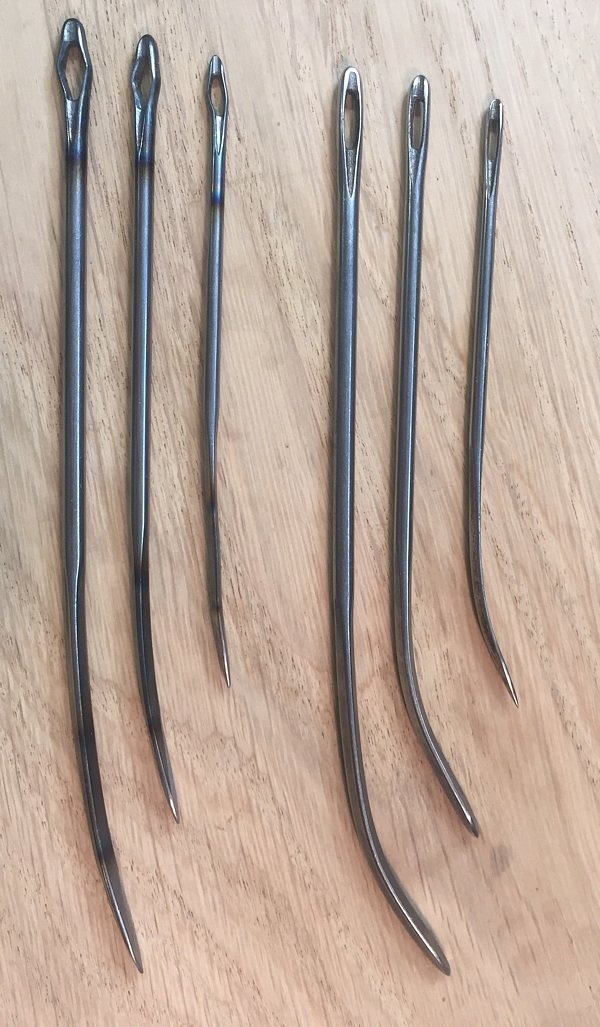
Awls: Awls are good to have for both bridle and mats.
When working with tarred rope and you want a bridle that fits tightly, sack needles don't work - you simply can't get the needle through with double rope between the rope and the bottle, so you need an awl. Awls come in different sizes and shapes, here you need a fairly small one about 4-6mm thick is good. It should be quite pointed but not sharp like a needle.
I also make awls. Available in 4, 5 and 6mm thickness, 5mm is best for bridle. Available with wooden handles and leather handles. The leather handle only works for lighter work and is 4mm.
When working with tarred rope and you want a bridle that fits tightly, sack needles don't work - you simply can't get the needle through with double rope between the rope and the bottle, so you need an awl. Awls come in different sizes and shapes, here you need a fairly small one about 4-6mm thick is good. It should be quite pointed but not sharp like a needle.
I also make awls. Available in 4, 5 and 6mm thickness, 5mm is best for bridle. Available with wooden handles and leather handles. The leather handle only works for lighter work and is 4mm.
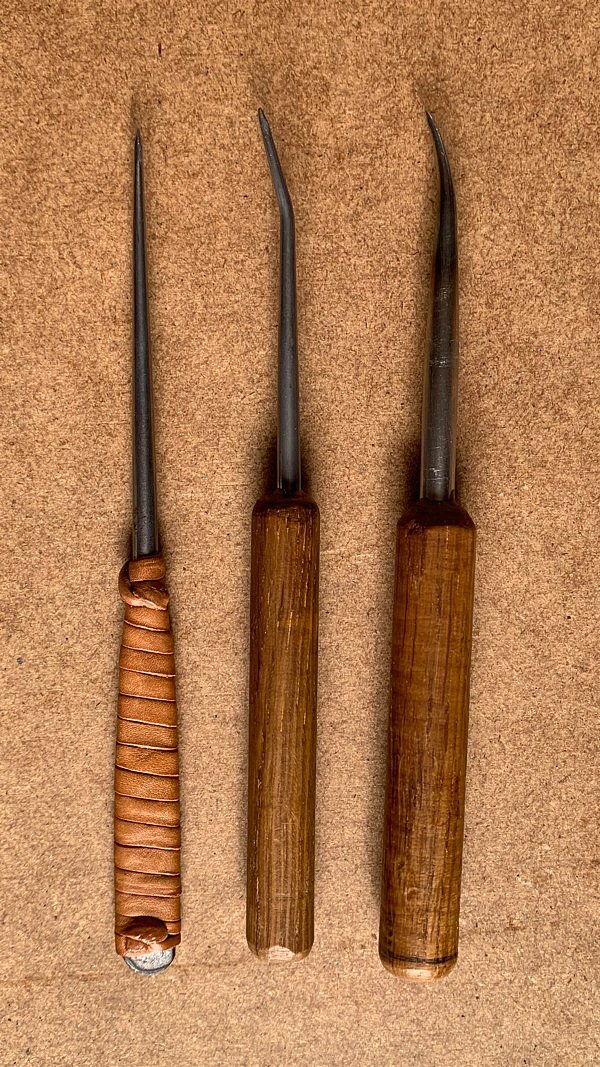
Selma needle: A Selma needle is basically a metal tube that is beveled at one end and into which you can insert your rope.
Selma needles are quite expensive, they are usually sold in sets with several sizes for more than 750:-. A single needle of the smallest size (if you can get it) costs about 70-90:-.
But you can make your own of course. Use a thin tube with a 4mm inner diameter and 0.5mm material thickness. Since you take in quite a lot, it is also advisable to put a wooden handle on them.
I also sell Selma needles with wooden handles.
But you can make your own of course. Use a thin tube with a 4mm inner diameter and 0.5mm material thickness. Since you take in quite a lot, it is also advisable to put a wooden handle on them.
I also sell Selma needles with wooden handles.
On the right of the picture: the 3 smallest Selma needles.
In the middle: my needles with wooden handles.
On the far left is a so-called "swedish fid" which is also used to splice ropes just like the Selma fid but it is not suitable here, it is too flat at the tip. In an emergency it might work.
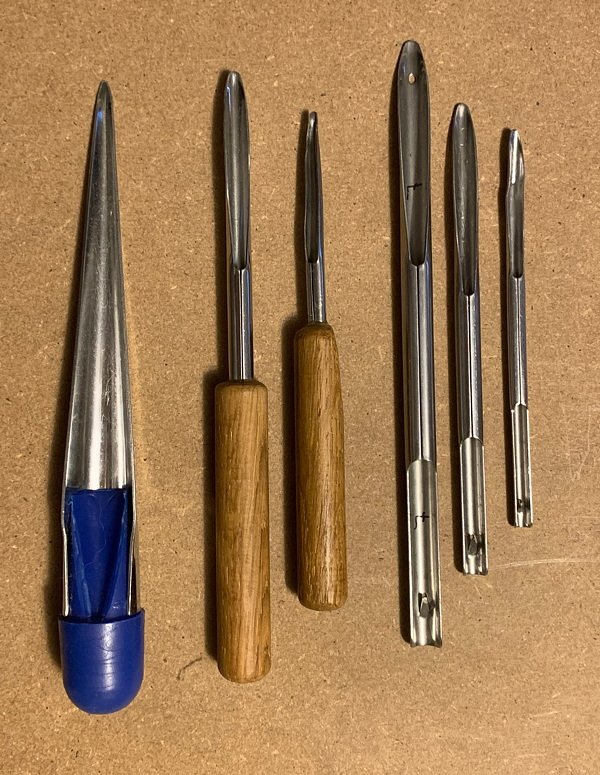
Knife and cutters
A knife is always good to have, but a small side cutter often works even better when cutting rope in tight spaces. Available cheaply at Biltema, for example (for Swedes). (on the right in the picture)
Rope dulls knives quickly, so it is advantageous to use a so-called blade knife. (on the left in the picture)
For more advanced bottles, it can also be good to use a compass to keep track of the distances (bottom picture).
Rope dulls knives quickly, so it is advantageous to use a so-called blade knife. (on the left in the picture)
For more advanced bottles, it can also be good to use a compass to keep track of the distances (bottom picture).
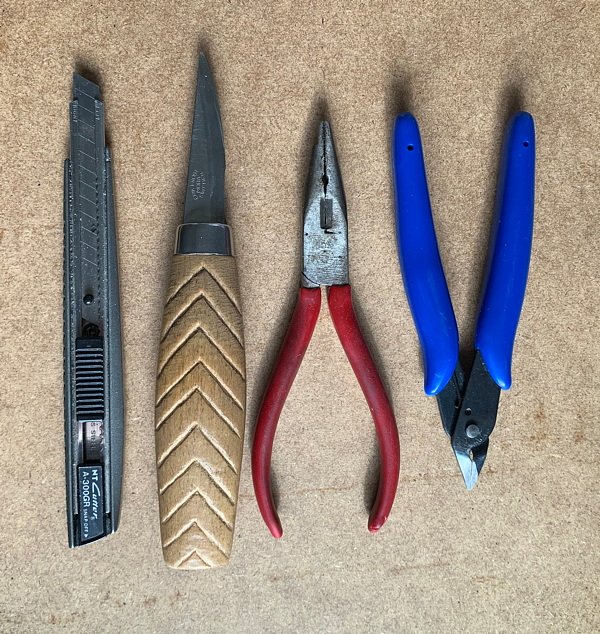
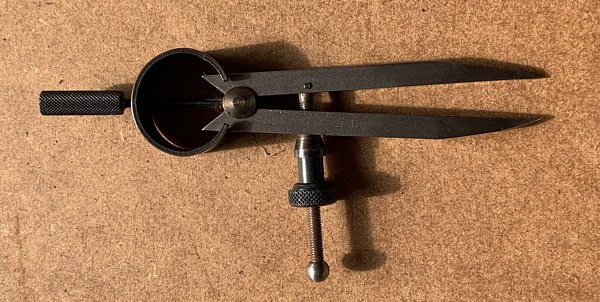
Glue:
You don't have to use glue, but it makes it easier to attach the cut ropes. For carpets, contact glue or fabric glue (if you don't like the smell of contact glue) is best.
For braiding, a light-flowing instant glue is best. It must be light-flowing so that it penetrates the fibers.
Wood glue also works, dilute with 10-20% water.
For braiding, a light-flowing instant glue is best. It must be light-flowing so that it penetrates the fibers.
Wood glue also works, dilute with 10-20% water.
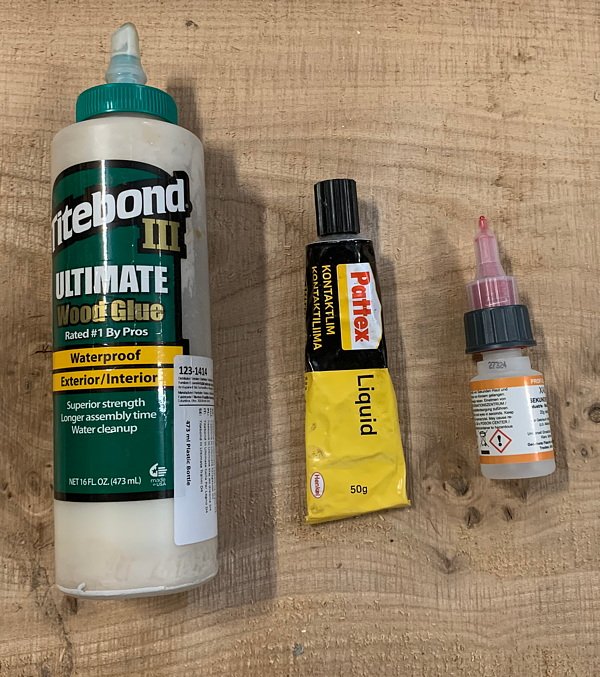
Tug hooks and neadles:
When making mats, it makes it easier to have a "tug hook" i.e. a hook to pull the rope through the mat. I make them from a bicycle spoke and a wooden handle. For the small mats, it should have a bend that can grip 4mm rope as tightly as possible.
The needles are used to control the shape of the mats and hold the ropes in place.
The needles are used to control the shape of the mats and hold the ropes in place.



















